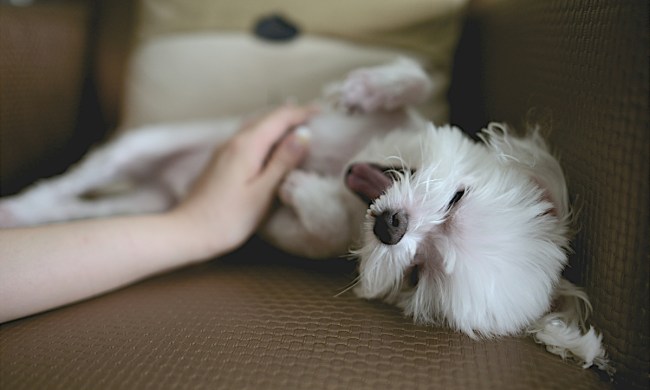You feed, bathe, and walk your dog. You take them to the vet and to the groomers (or, perhaps, clip their nails yourself). And, of course, you play with your four-legged friend constantly. There are the old play-time standbys — fetch, frisbee, and tug-of-war — or maybe your dog just really likes chasing bubbles. But have you ever considered performing magic tricks for your dog?
In less than 10 seconds, this adorable video proves why magic for dogs is a good idea. You should absolutely don your magician’s hat and embrace your inner Harry Potter the next time you play with your pup.
@firstnamewild My dogs reaction to a magic trick! #fyp #trending #funny #learningtodog #love #xyzbca #pets #viral
This dog’s reaction to magic is perfection
It’s a simple case of sleight of hand. TikToker Kyle Carillet clasps his hands together, making his dog think the toy is in Carillet’s right hand and not his left. And since the pup never looks away, he’s in for the shock of his life when Carillet releases his fist.
The way this dog sniffs at his parent’s hand, followed by the shock and disbelief when he realizes the toy is missing, is something we can watch repeatedly (and have). And, of course, it’s followed up by a look to the camera worthy of any cast member of The Office. We’re just glad this particular toy is a squeaker, alerting the befuddled dog to his prize’s true whereabouts.
Can dogs really be tricked by magic?
There are hundreds of pet videos on YouTube, Instagram, and TikTok like the one above, featuring dogs getting tricked by their pet parents, but do they really understand magic? Are their reactions a result of genuine confusion about where the object has gone, or are they just annoyed that their treat has disappeared?
Scientists don’t know the answer to that definitively, but psychologists do believe we can use magic tricks to understand how animals’ minds work better. And the more we know about our pets, the better pet parents we’ll be.
In the meantime, feel free to amuse your dog (and yourself) with some magic tricks.
Magic tricks you can perform for your dog
You don’t have to be an expert magician to fool your pet. You can perform a sleight-of-hand trick like the one above using a toy, treat, or any small object (of course, if you’re using a dog treat, remember that your dog’s sense of smell could override what they see with their eyes).
If you’re looking for a super simple “trick” anyone can do, you can also play a game of peekaboo:
- Stand in the doorway with a sheet or blanket in front of you.
- Lower the blanket a few times to let your dog know you’re there.
- Throw the blanket up to cover you completely and run away to hide.
- Your dog will be amazed that you’ve suddenly disappeared when the blanket falls to the ground.
Countless videos of dogs going crazy for this stunt went viral a few years ago, thanks to the “What the Fluff” Challenge. It’s a timeless trick that can delight any pet.
Of course, you should be warned: Your dog just might get a little too used to your antics. This pet dad learned the hard way that his dog wouldn’t take any treats without seeing a magic trick first.
Our dogs are lovable, playful, and trusting, which makes them perfect audiences for a little magic. Just make sure you reward their trust with a treat afterward.


